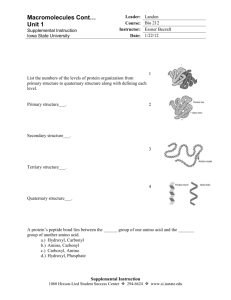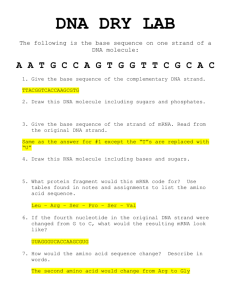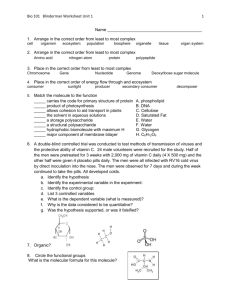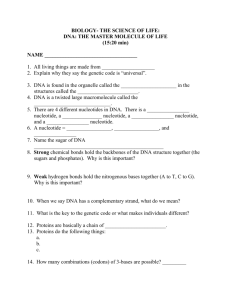Chapter 12 - Genes:Structure, Replication, and Expression
advertisement
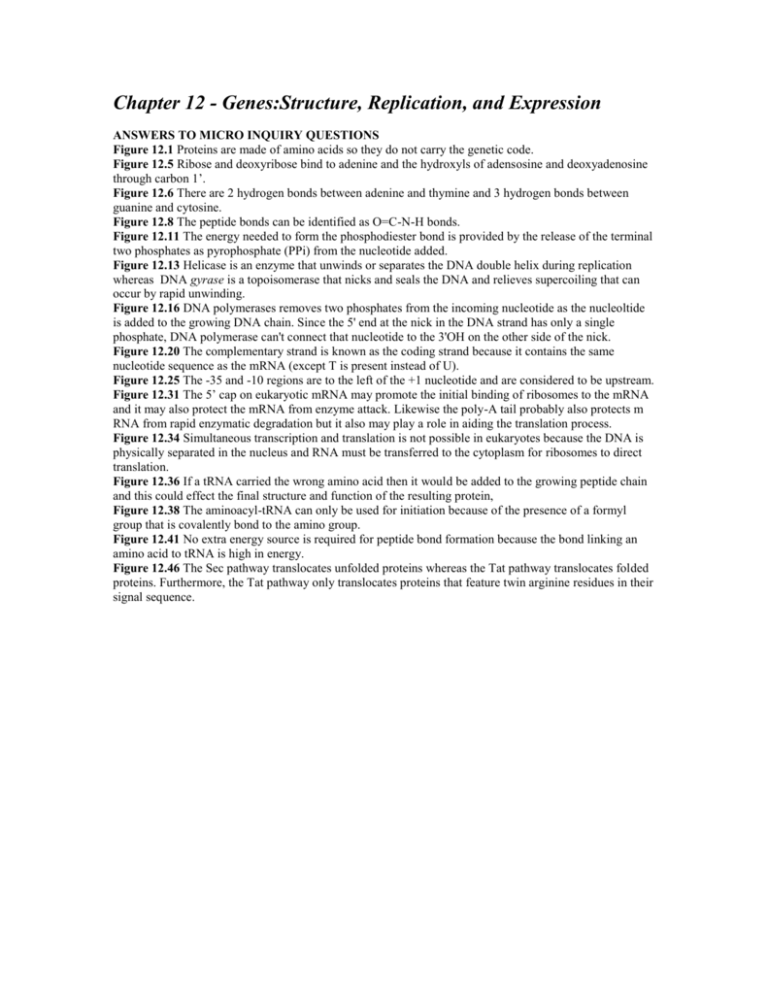
Chapter 12 - Genes:Structure, Replication, and Expression ANSWERS TO MICRO INQUIRY QUESTIONS Figure 12.1 Proteins are made of amino acids so they do not carry the genetic code. Figure 12.5 Ribose and deoxyribose bind to adenine and the hydroxyls of adensosine and deoxyadenosine through carbon 1’. Figure 12.6 There are 2 hydrogen bonds between adenine and thymine and 3 hydrogen bonds between guanine and cytosine. Figure 12.8 The peptide bonds can be identified as O=C-N-H bonds. Figure 12.11 The energy needed to form the phosphodiester bond is provided by the release of the terminal two phosphates as pyrophosphate (PPi) from the nucleotide added. Figure 12.13 Helicase is an enzyme that unwinds or separates the DNA double helix during replication whereas DNA gyrase is a topoisomerase that nicks and seals the DNA and relieves supercoiling that can occur by rapid unwinding. Figure 12.16 DNA polymerases removes two phosphates from the incoming nucleotide as the nucleoltide is added to the growing DNA chain. Since the 5' end at the nick in the DNA strand has only a single phosphate, DNA polymerase can't connect that nucleotide to the 3'OH on the other side of the nick. Figure 12.20 The complementary strand is known as the coding strand because it contains the same nucleotide sequence as the mRNA (except T is present instead of U). Figure 12.25 The -35 and -10 regions are to the left of the +1 nucleotide and are considered to be upstream. Figure 12.31 The 5’ cap on eukaryotic mRNA may promote the initial binding of ribosomes to the mRNA and it may also protect the mRNA from enzyme attack. Likewise the poly-A tail probably also protects m RNA from rapid enzymatic degradation but it also may play a role in aiding the translation process. Figure 12.34 Simultaneous transcription and translation is not possible in eukaryotes because the DNA is physically separated in the nucleus and RNA must be transferred to the cytoplasm for ribosomes to direct translation. Figure 12.36 If a tRNA carried the wrong amino acid then it would be added to the growing peptide chain and this could effect the final structure and function of the resulting protein, Figure 12.38 The aminoacyl-tRNA can only be used for initiation because of the presence of a formyl group that is covalently bond to the amino group. Figure 12.41 No extra energy source is required for peptide bond formation because the bond linking an amino acid to tRNA is high in energy. Figure 12.46 The Sec pathway translocates unfolded proteins whereas the Tat pathway translocates folded proteins. Furthermore, the Tat pathway only translocates proteins that feature twin arginine residues in their signal sequence.
